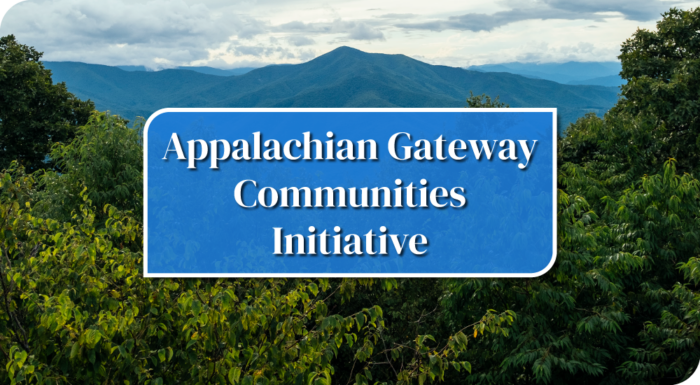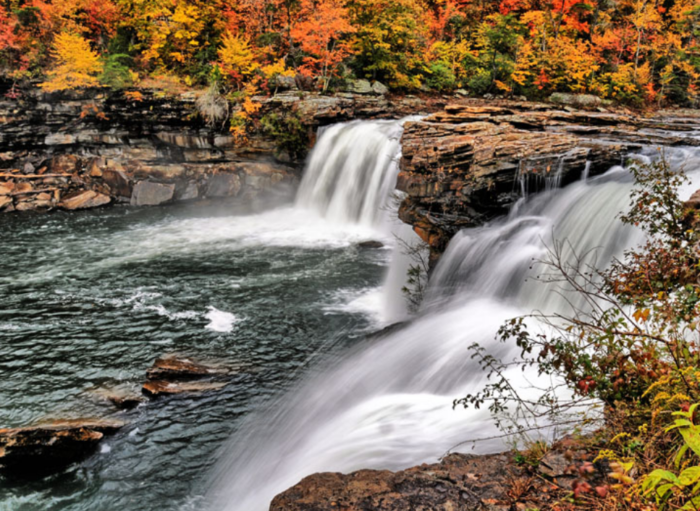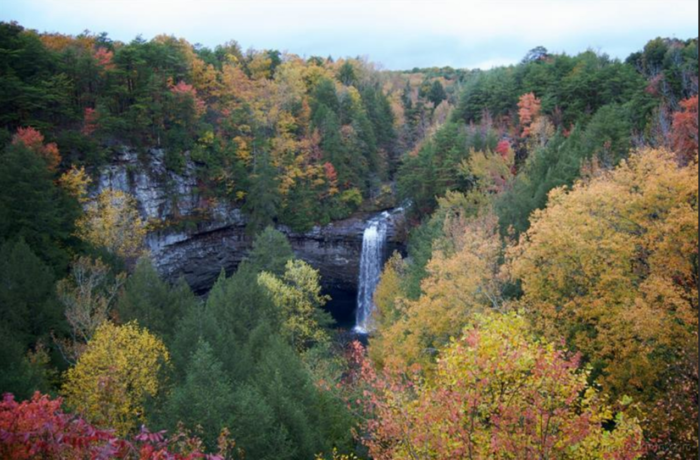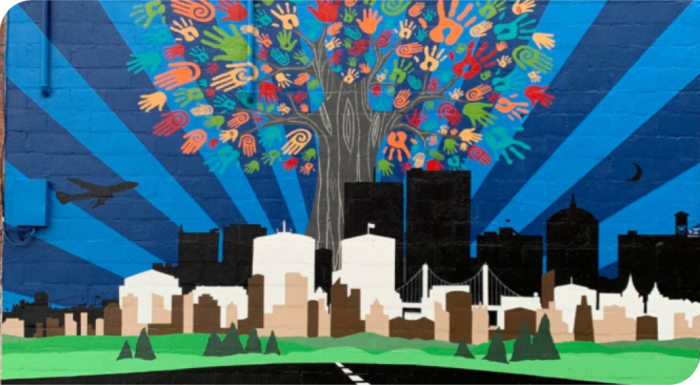
Tireless dedication and love for community have been the driving forces in the nearly two-decade revitalization happening in downtown Princeton, West Virginia. When Lori McKinney (workshop team lead and member of the Princeton Renaissance Project) arrived, Princeton’s downtown was almost empty, with 80% vacancy. Now, 19 years later, the downtown is practically at capacity, filled with passionate local businesses and artists. Countless weekly and monthly events like concerts and poetry nights define the creative and energetic town, dubbed “the Heart of Mercer County.”
McKinney attended the 2018 Appalachian Gateway Communities Initiative (AGCI) workshop in Shepherdstown, accompanied by a number of community members and park staff from the nearby Camp Creek State Park, seeking to create a public art project that would build a connection between Princeton and the State Park. Being away from the community and put into the crucible of the workshop was one of the things McKinney most appreciated about her experience. Being in a place where the sole goal was to create and to innovate new solutions for their community, the team experienced a number of serendipitous moments.
Celebrating Community Assets
When brainstorming ideas for their project, team member and Camp Creek Superintendent Frank Ratcliffe mentioned that he had planted the seeds from a bag of bird feed in the state park, which had grown into a field of sunflowers. When they were at “the peak of the bloom,” he said, it was beautiful. This field and the accompanying phrase led the team to envision the Peak of the Bloom Festival, an idea that would become the central part of their seed grant proposal. The $7,500 seed grant the team received following the workshop played a critical role in developing capacity for the festival, including the acquisition of a wagon for transporting people to and from Camp Creek State Park, a number of public arts projects, and branding materials for the first festival.
Today, McKinney is working alongside local artists to put together the fourth annual Peak of the Bloom Festival, which runs throughout the month of August and involves concerts, painting sessions, picnics catered by local businesses, and other artistic activities—all inspired by the sunflowers Ratcliffe planted. The event has proven quite durable, too. In 2020, around the time of the second festival, it was unclear whether outdoor events would be safe. In response, the team pivoted to a digital media approach, which proved to be an easy transition for the number of media-creation specialists involved in the local arts scene.
McKinney has faith in the festival’s future. Local buy-in has been overwhelmingly positive—in fact, every event in last year’s festival was nearly sold out or close to capacity. Additionally, more than 15 local businesses contributed to the festival in some way, such as catering or event hosting. Many businesses also offer limited-time items to celebrate Peak of the Bloom, such as sunflower-themed brews or clothing.

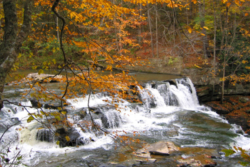
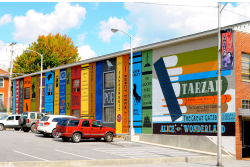
Pictured left to right: aerial view of downtown Princeton; Camp Creek State Park; murals in downtown Princeton
Building on Tourism Growth
Princeton’s dedicated leaders are presently working towards a host of other projects, each of which will provide new and unique benefits for their thriving town. The first of these projects is the upcoming Lonnie Gunter Jr. Center, a museum that will house a massive collection of various artifacts, many of which relate to West Virginian industrial and cultural history. This project was inspired by a workshop session offered by Cheryl Hargrove of Hargrove International. Hargrove’s presentation was about heritage tourism and offered a number of validating examples of other similar community projects. In addition, the community is waiting to fund the renovation of a public park, local theater, and a farmer’s market.
With “relentless optimism and the drive of a few creative people,” Princeton is poised to continue its upward growth, further growing into its identity as a gateway destination with a lively local art scene. McKinney mentioned that the workshop played a critical role in having time to focus and think deeply about visions for the community, and hopes to return to a future workshop, with local business owners having a bigger place in her team.
